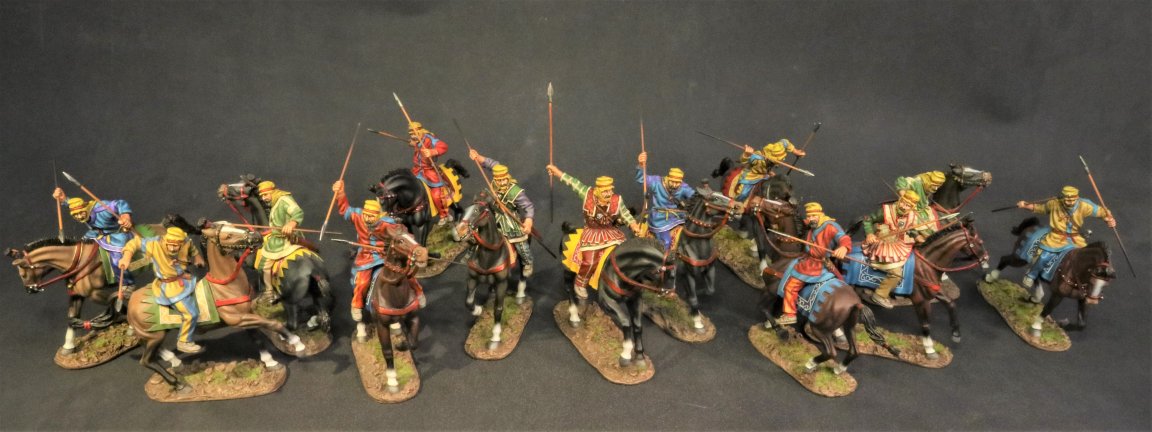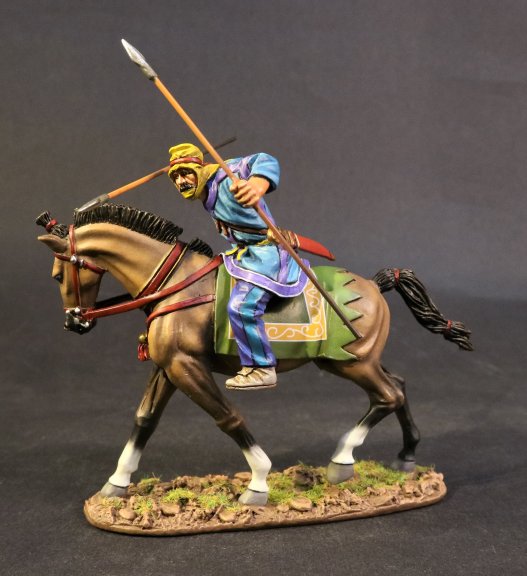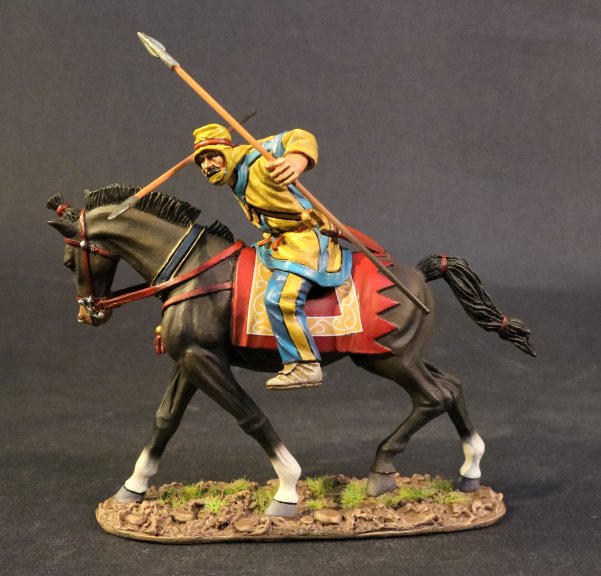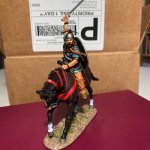- Joined
- Feb 2, 2011
- Messages
- 2,093
NEW RELEASES FOR NOVEMBER 2020
THE ANCIENTS COLLECTION
ARMIES AND ENEMIES OF ANCIENT ROME
REPUBLICAN ROMANS
REPUBLICAN ROMAN CAVALRY
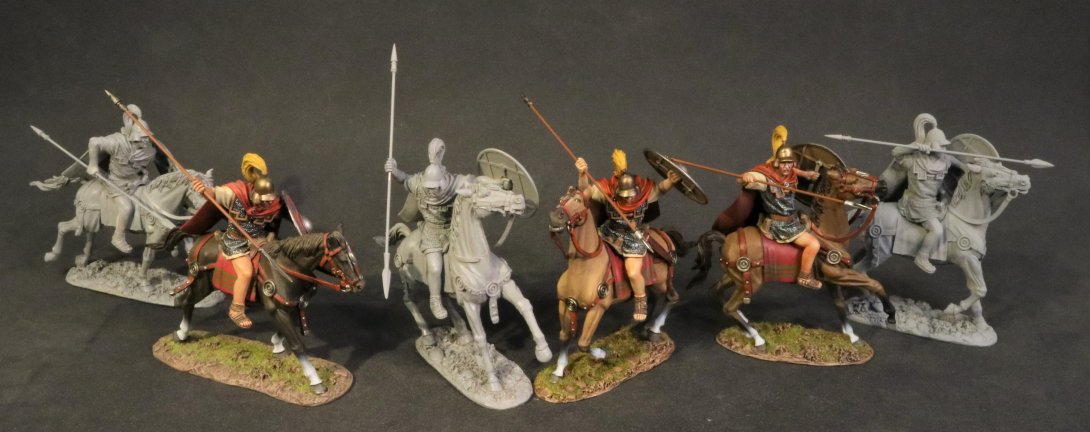
Roman cavalry became an integral part of the legion in this period.
As the stirrup had not yet been developed, riding was an acquired skill, and the Roman saddle was designed to keep the cavalryman mounted firmly on the horse. At this time cavalry were auxiliary troops used mainly for scouting, skirmishing and to combat enemy cavalry.
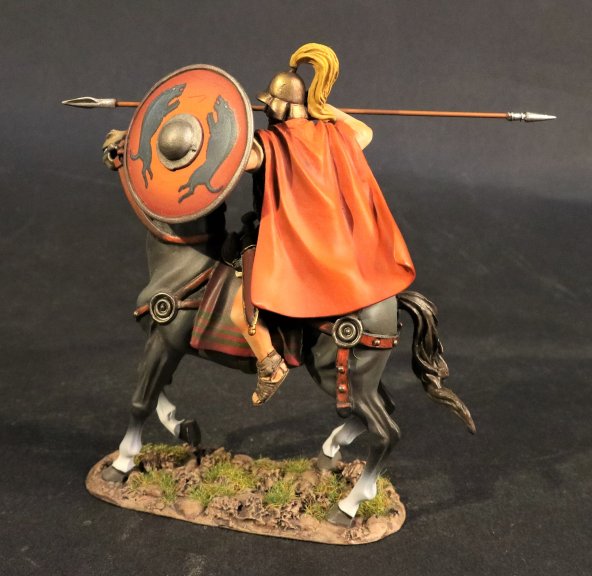
MRRCAV-03R
ARMIES AND ENEMIES OF ANCIENT ROME,
THE ROMAN ARMY OF THE MID REPUBLIC,
ROMAN CAVALRY.
(2 pcs)
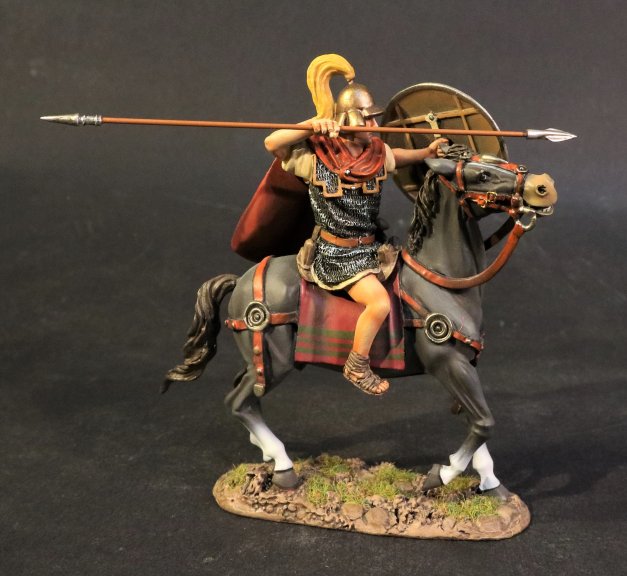
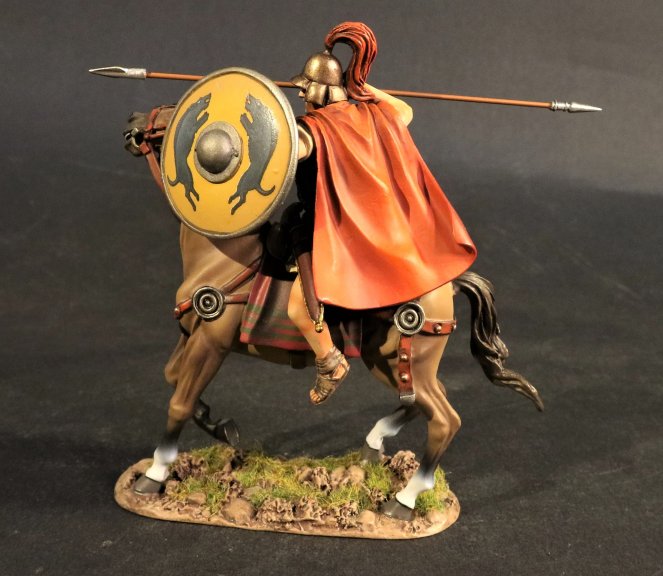
MRRCAV-03Y
ARMIES AND ENEMIES OF ANCIENT ROME,
THE ROMAN ARMY OF THE MID REPUBLIC,
ROMAN CAVALRY.
(2 pcs)
ANCIENT GAULS
The Gauls were Celtic peoples inhabiting Gaul in the Iron Age and the Roman period (roughly from the 5th century BC to the 5th century AD).
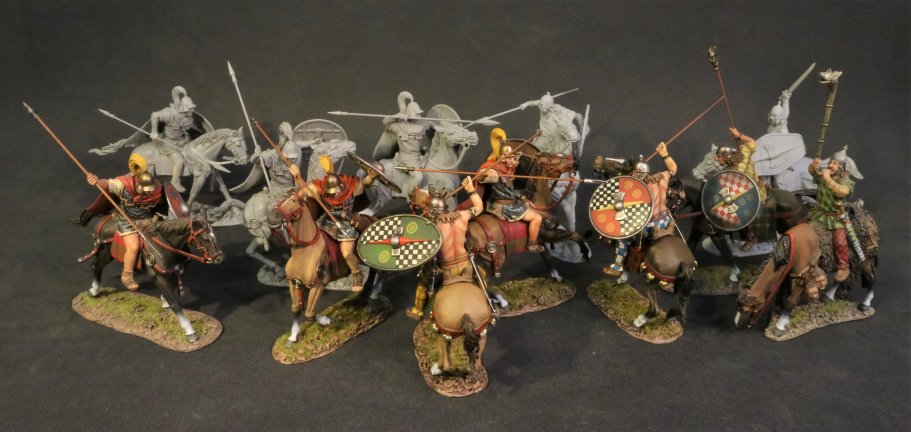
The Gauls emerged around the 5th century BC as the bearers of the La Tène culture north of the Alps (spread across the lands between the Seine, Middle Rhine and upper Elbe). By the 4th century BC, they spread over much of what is now France, Belgium, Switzerland, Southern Germany, Austria and the Czech Republic by virtue of controlling the trade routes along the river systems of the Rhône, Seine, Rhine, and Danube, and they quickly expanded into Northern Italy, the Balkans, Transylvania and Galatia. Gaul was never united under a single ruler or government, but the Gallic tribes were capable of uniting their forces in large-scale military operations. They reached the peak of their power in the early 3rd century BC. The rising Roman Republic after the end of the First Punic War increasingly put pressure on the Gallic sphere of influence; the Battle of Telamon of 225 BC heralded a gradual decline of Gallic power over the 2nd century, until the eventual conquest of Gaul in the Gallic Wars of the 50s BC. After this, Gaul became a province of the Roman Empire, and the Gauls were culturally assimilated into a Gallo-Roman culture, losing their tribal identities by the end of the 1st century AD.
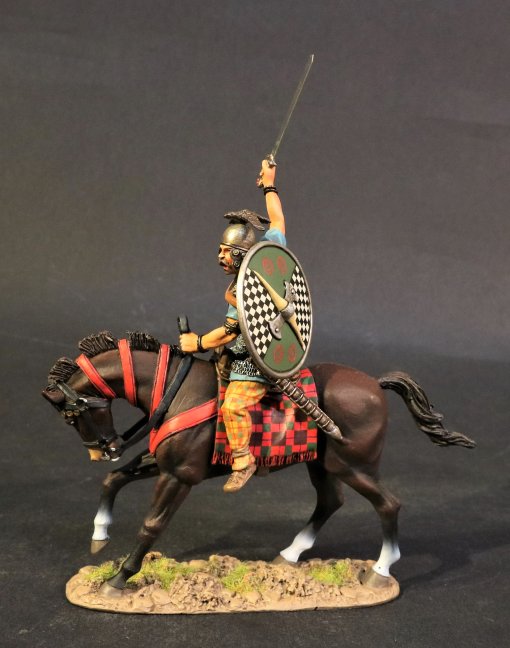
AERCAV-04
ARMIES AND ENEMIES OF ANCIENT ROME,
ANCIENT GAULS,
GAUL CAVALRY,
(2 pcs)
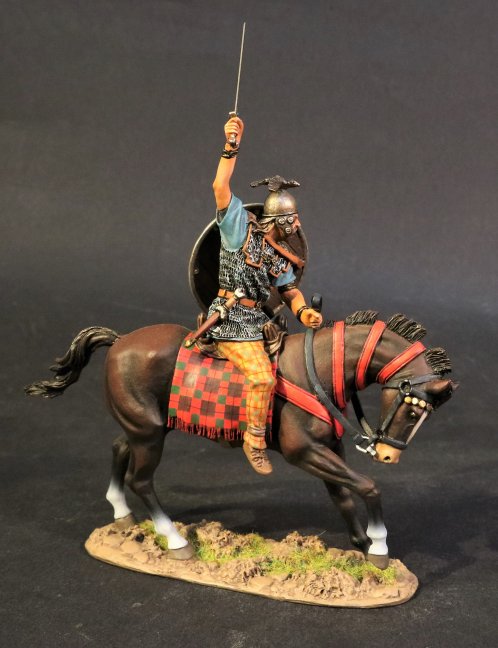
THE NUMIDIANS
The Numidians were the Berber population of Numidia (present day Algeria and in a smaller part of Tunisia). The Numidians were one of the earliest Berber tribes to trade with the settlers of Carthage, and as Carthage grew , the relationship with the Numidians blossomed. Carthage’s military used the Numidian cavalry as mercenaries. Numidia provided some of the highest quality cavalry of the second Punic war, and the Numidian cavalry played a key role in a number of battles, both early on in support of Hannibal and later in the war after switching allegiances, to the Roman Republic.
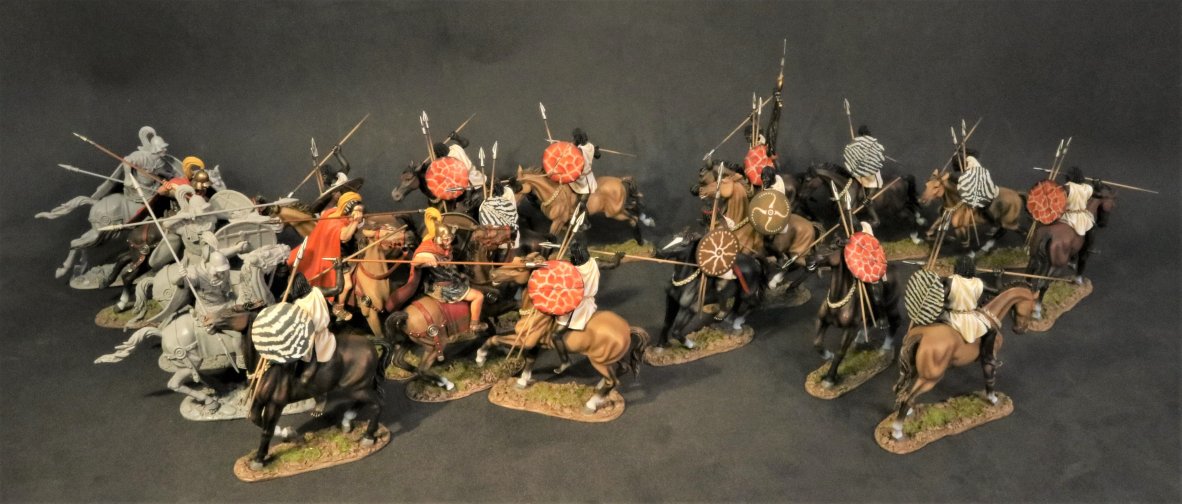
Ancient authors, such as Polybius and Livy, tend to stress Carthage’s reliance on mercenary units, which is slightly misleading when applied to the Carthaginian army. While Carthage did employ mercenaries in the true sense of the word, Carthage’s usage of native African and Iberian recruits would not be true mercenaries as these peoples were subjects of Carthage.
Also Carthage’s army was composed of recruits from its allies fighting for Carthage in accordance with bilateral treatise. The Numidian Kingdoms are an example who provided extensive light cavalry due to the close relationship between the two states.
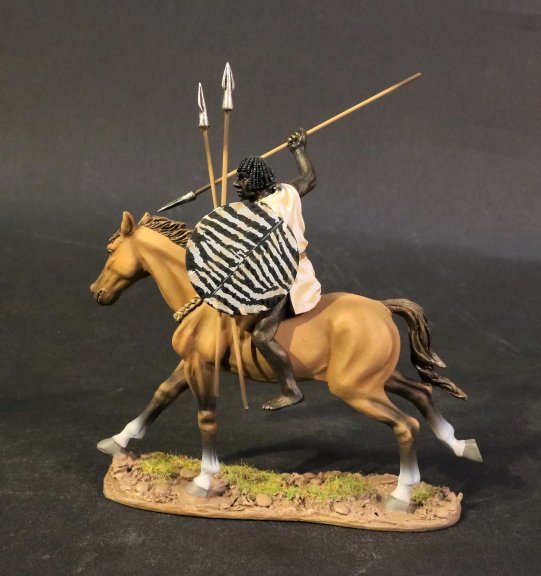
CTNUM-03A
ARMIES AND ENEMIES OF ANCIENT ROME,
THE NUMIDIANS,
NUMIDIAN LIGHT CAVALRY.
(3 pcs)
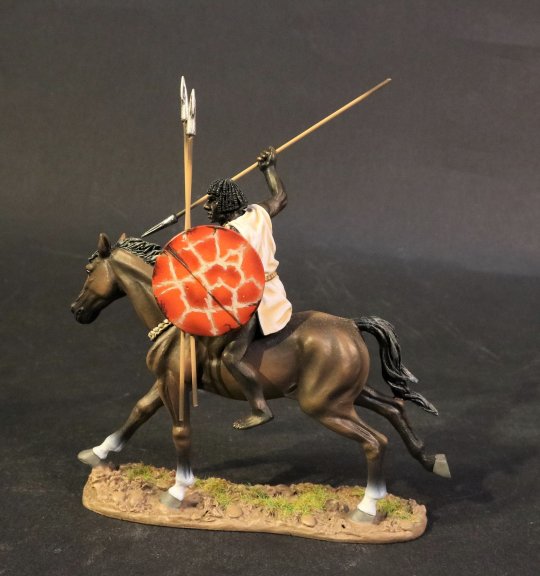
CTNUM-03B
ARMIES AND ENEMIES OF ANCIENT ROME,
THE NUMIDIANS,
NUMIDIAN LIGHT CAVALRY.
(3 pcs)
THE ANCIENTS COLLECTION
ARMIES AND ENEMIES OF ANCIENT ROME
REPUBLICAN ROMANS
REPUBLICAN ROMAN CAVALRY

Roman cavalry became an integral part of the legion in this period.
As the stirrup had not yet been developed, riding was an acquired skill, and the Roman saddle was designed to keep the cavalryman mounted firmly on the horse. At this time cavalry were auxiliary troops used mainly for scouting, skirmishing and to combat enemy cavalry.

MRRCAV-03R
ARMIES AND ENEMIES OF ANCIENT ROME,
THE ROMAN ARMY OF THE MID REPUBLIC,
ROMAN CAVALRY.
(2 pcs)


MRRCAV-03Y
ARMIES AND ENEMIES OF ANCIENT ROME,
THE ROMAN ARMY OF THE MID REPUBLIC,
ROMAN CAVALRY.
(2 pcs)
ANCIENT GAULS
The Gauls were Celtic peoples inhabiting Gaul in the Iron Age and the Roman period (roughly from the 5th century BC to the 5th century AD).

The Gauls emerged around the 5th century BC as the bearers of the La Tène culture north of the Alps (spread across the lands between the Seine, Middle Rhine and upper Elbe). By the 4th century BC, they spread over much of what is now France, Belgium, Switzerland, Southern Germany, Austria and the Czech Republic by virtue of controlling the trade routes along the river systems of the Rhône, Seine, Rhine, and Danube, and they quickly expanded into Northern Italy, the Balkans, Transylvania and Galatia. Gaul was never united under a single ruler or government, but the Gallic tribes were capable of uniting their forces in large-scale military operations. They reached the peak of their power in the early 3rd century BC. The rising Roman Republic after the end of the First Punic War increasingly put pressure on the Gallic sphere of influence; the Battle of Telamon of 225 BC heralded a gradual decline of Gallic power over the 2nd century, until the eventual conquest of Gaul in the Gallic Wars of the 50s BC. After this, Gaul became a province of the Roman Empire, and the Gauls were culturally assimilated into a Gallo-Roman culture, losing their tribal identities by the end of the 1st century AD.

AERCAV-04
ARMIES AND ENEMIES OF ANCIENT ROME,
ANCIENT GAULS,
GAUL CAVALRY,
(2 pcs)

THE NUMIDIANS
The Numidians were the Berber population of Numidia (present day Algeria and in a smaller part of Tunisia). The Numidians were one of the earliest Berber tribes to trade with the settlers of Carthage, and as Carthage grew , the relationship with the Numidians blossomed. Carthage’s military used the Numidian cavalry as mercenaries. Numidia provided some of the highest quality cavalry of the second Punic war, and the Numidian cavalry played a key role in a number of battles, both early on in support of Hannibal and later in the war after switching allegiances, to the Roman Republic.

Ancient authors, such as Polybius and Livy, tend to stress Carthage’s reliance on mercenary units, which is slightly misleading when applied to the Carthaginian army. While Carthage did employ mercenaries in the true sense of the word, Carthage’s usage of native African and Iberian recruits would not be true mercenaries as these peoples were subjects of Carthage.
Also Carthage’s army was composed of recruits from its allies fighting for Carthage in accordance with bilateral treatise. The Numidian Kingdoms are an example who provided extensive light cavalry due to the close relationship between the two states.

CTNUM-03A
ARMIES AND ENEMIES OF ANCIENT ROME,
THE NUMIDIANS,
NUMIDIAN LIGHT CAVALRY.
(3 pcs)

CTNUM-03B
ARMIES AND ENEMIES OF ANCIENT ROME,
THE NUMIDIANS,
NUMIDIAN LIGHT CAVALRY.
(3 pcs)


